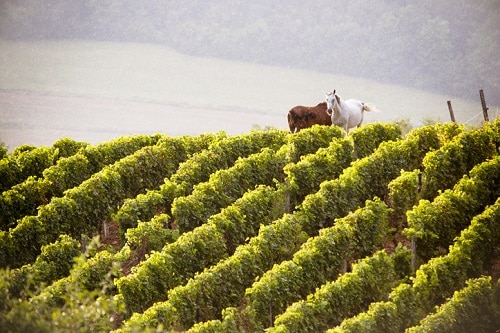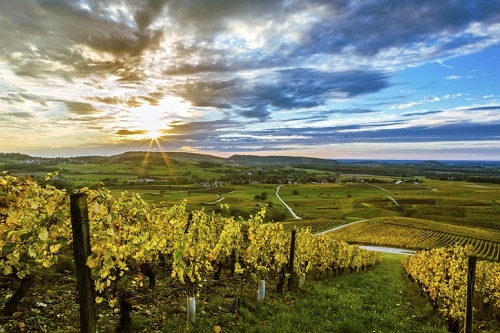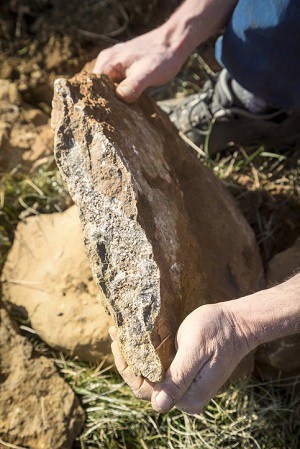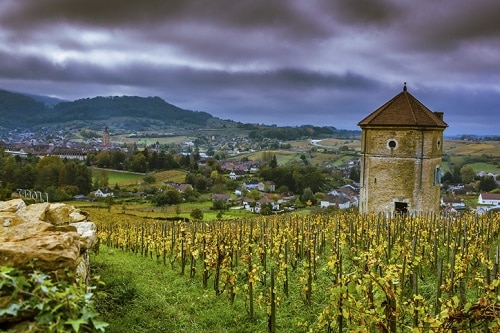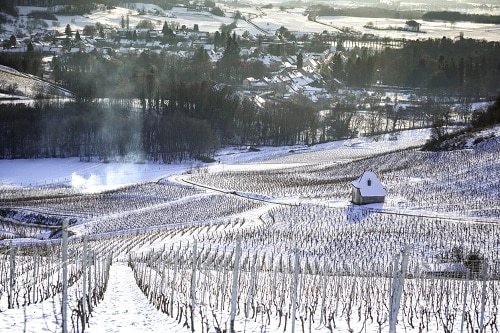Trousseau Grape Variety & Wine Profile
Last Updated on November 2, 2023.
Trousseau (pronounced troo-sow) is one of many ancient grape varieties that takes its name from a context that has no relationship to wine. The word Trousseau’s origin is French, as is the grape. However, its popular definition refers to items a new bride would bring in a bundle from her ancestral home, such as clothes, accessories, and household linens.
As it turns out, the grape is named Trousseau because the shape of its berry cluster was thought to resemble a “Bride’s Trousseau;” this is the only similarity between the two, and they have no other kinship. Nonetheless, the Vinifera Vita Trousseau does have different names and synonyms and is named differently within individual countries and regions.
The Origin of & Progression of Trousseau
Trousseau or Trousseau Noir, also known as Bastardo, Merenzao, and Verdejo Negro, is a red wine grape originating in the Jura region of eastern France; this is a narrow valley located in the hills between Burgundy and Switzerland and existed in isolation for centuries. Today Trousseau is grown in the Jura AOC / AOP’s of Côtes du Jura, Arbois, and Arbois-Pupillin and produces the classic and yet still arguably the most exciting example of this wine. Here Trousseau is vinified into a variety of styles, including red, rosé, Crémant du Jura (sparkling), and the centuries-old Macvin du Jura (vin de liqueur). But other regions are catching up, with new plantings in the United States, Australia, and Argentina.
Now grown around the world, Trousseau’s most extensive cultivation is found in Portugal where it’s known as Bastardo and is planted in a field-blend fashion with the other preferred grapes used in the production of port wines from the Douro Region. There are also a few new plantings in Madeira, as it had previously disappeared after Phylloxera hit the island; Bastardo Madeira is the rarest and most-prized production of this varietal from anywhere.
In Spain’s Galicia, it is vinified as a signal varietal as well as being blended with other red wines and is also known as Merenzao in Valdeorras and Ribeira Sacra respectively. Trousseau has retained its French name in California and Oregon and has recently gained popularity among the newer generation of Westcoast winemakers.
Trousseau thrives in Jurassic soil compositions that are well-drained and limestone-laden with schist plus sand over granite and slate. Interestingly enough, the term Jurassic originated for the first geological studies of the Jura Mountains – Jurassique. (Not to be confused with the Jurassic Park film series.)
Trousseau Tasting Notes
No matter where it’s from or what it’s called, Trousseau’s flavor profile is consistently described enigmatically. It’s pale and light-bodied with intense, rich alcohol levels. It has a firm tannic grip with depth and yet weightlessness. It has aromas of deep cherry, violets, strawberry, orange marmalade, lemon peel, nutmeg, black pepper, ripe cheese, seafoam, cured meats, and aged game. It has a chewy and pithy texture with a creamy soft silky finish.
Pairing Trousseau Wines With Food
Given Trousseau’s flavor profile ambiguity, it’s no surprise that it pairs well with a wide variety of dishes. Some food compliments you may like to try are: charcuterie, Comté cheese, cow’s and creamy goats milk cheeses, game or mushroom pâtés and terrines, Chicken with Morel Mushroom, Potato Mushroom Soup, Pork Sausage, Cioppino, Steak Tartare, Basque-style Tuna and Paella with Saffron and Smoked Paprika.
Countries Currently Producing Trousseau:
France
Portugal
United States
Spain
Australia
Ukraine
Argentina
Major Current Trousseau Producers by Country:
Jura, France
Frederick Lambert, Côtes du Jura
Jacques Puffeney, Berangeres, Arbois
Lucien Aviet, Caveau de Bacchus, Cuvee Geologues, Arbois
Domaine de la Pinet, Arbois
Daniel Dugois, Grevilliere, Arbois
Annies Philip Barnard, Le Ginglet, Arbois-Pupillin
Domaine Overnoy-Crinquand, Arbois-Pupillin
Portugal
Conceito, Regional Durienses, Douro
Jose Maria da Fonseca 30 yr Bastardinho de Azeitao liqueur, Peninsula Setubal
Spain
Fedellos do Couto, Quinta da Muradella, Galicia
Algueira Risco, Ribeira Sacra
Fazenda Pradio, Ribeira Sacra
Escalada Do Sil, Valdeorras
Pepe Raventos, Negre de Les Terrases del Serral, Penedes
California, USA
Harrington Wines Siletto Vineyard Trousseau, La Cienega Valley
Forlorn Hope Trousseau Noir, Calaveras County
Broc Cellars Trousseau Noir Rose, Solano County
Bodegas Paso Robles Pimenteiro, Paso Robles,
Arnot-Roberts Luchsinger Vineyard Trousseau, Clear Lake,
Stolpman Vineyards Combe Trousseau, Ballard Canyon,
Forlorn Hope Trousseau Noir, Calaveras County,
Broc Cellars Trousseau Noir Rose, Solano County
Oregon, USA
The Eyrie Vineyards Trousseau, Dundee Hills,
James Rahn Omero Vineyard Trousseau Noir, Ribbon Ridge,
Bodegas Paso Robles Pimenteiro, Paso Robles
Australia
Kies Family Wines Bastardo, Barossa Valley
Lino Ramble Blind Mans Bluff Bastardo, McLaren Vale
Mazza Bastardo Rose, Geographe
Argentina
Bodega Aniello Trousseau, Patagonia
Ukraine
Shabo ‘Royal Story’ Bastardo, Shabo
Massandra Collection
Learn About These Other Wine Grape Varieties
Written By Jeff Bareilles
Jeff or “JB” is a native to the San Francisco Bay area and wants to live in a world where wine is served with every meal. As a beverage and food professional with more than 20 years of experience, he’s contributed to The Food Lover’s Guide to Wine; The Pho Cookbook (James Beard Award Best Signal Subject 2018); Unforgettable: The Bold Flavors of Paula Wolfert’s Renegade Life (James Beard Award Lifetime Achievement Award 2018); Manresa: An Edible Reflection; Happiness is on the Plate: Episode #1; Wine Spectator; Wine Enthusiast; The Wall Street Journal; San Francisco Chronicle; and GQ Magazine. When he’s not “tasting” and eating he’s writing about food and beverage or developing recipes in his laboratory (AKA: kitchen).
The Structure and Style of Trousseau Wines
Body Medium - Light
Sugar Dry or Sweet
Acid Medium
Alcohol Medium - Plus
Tannins Medium - Plus
